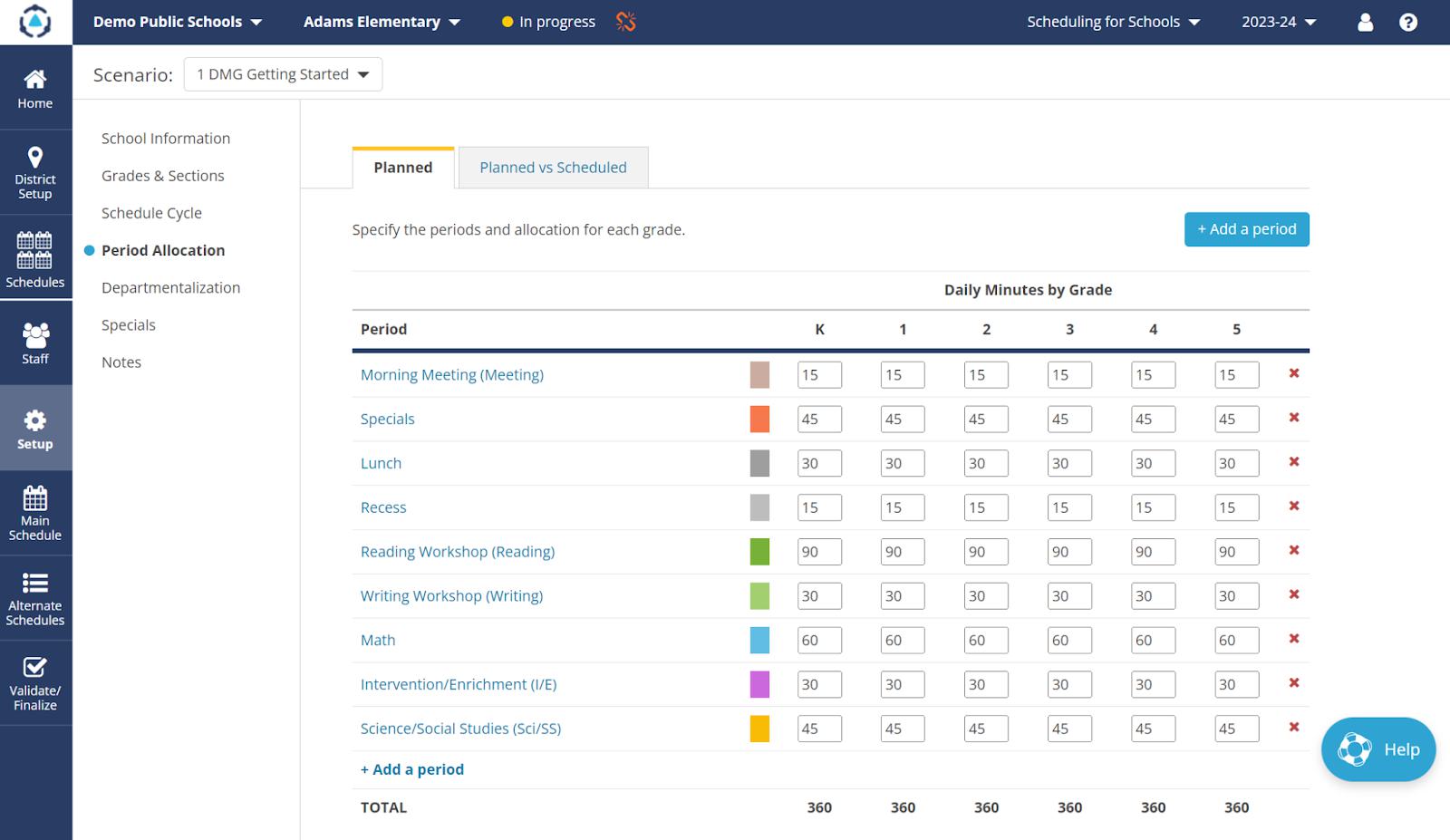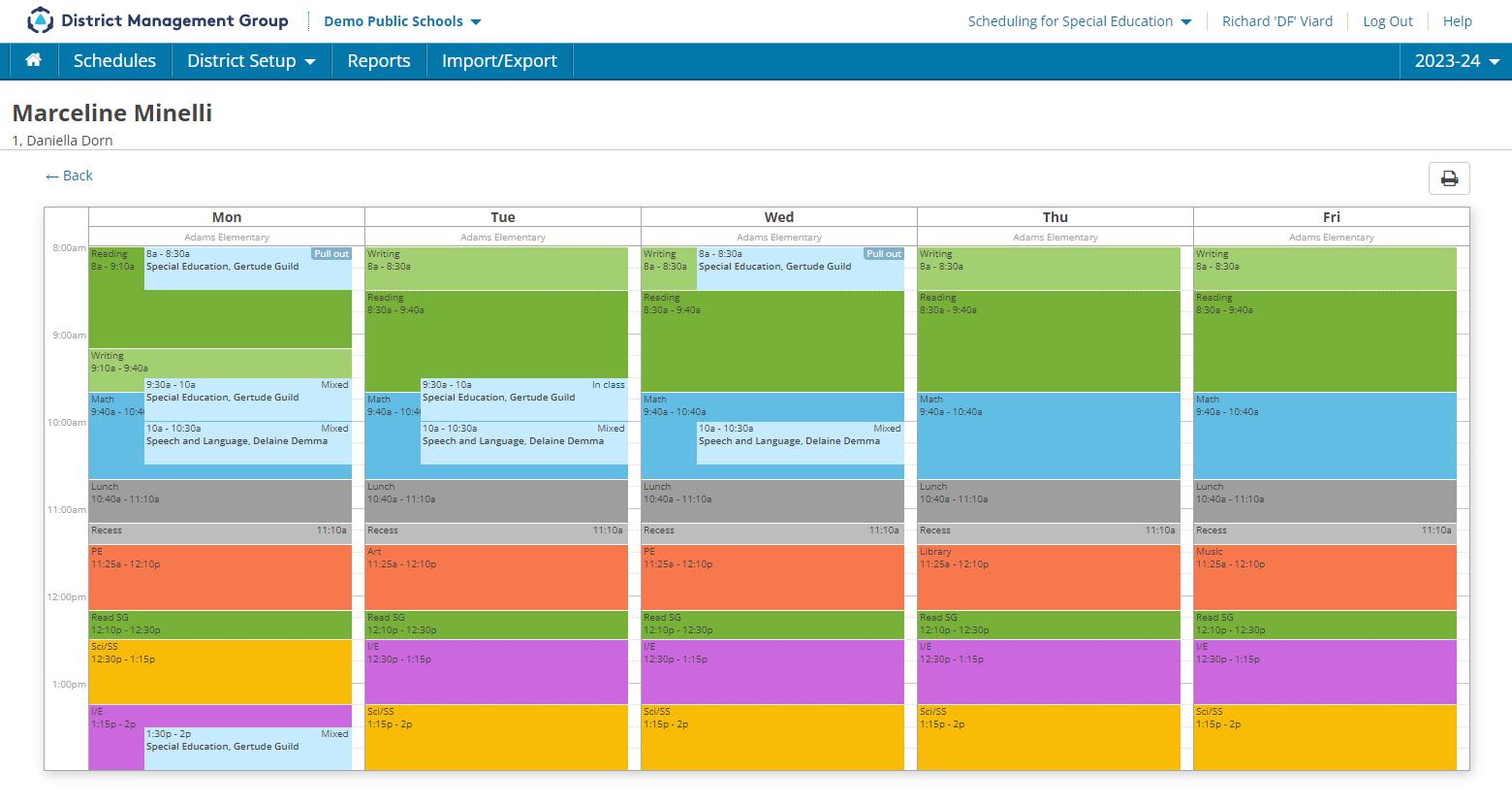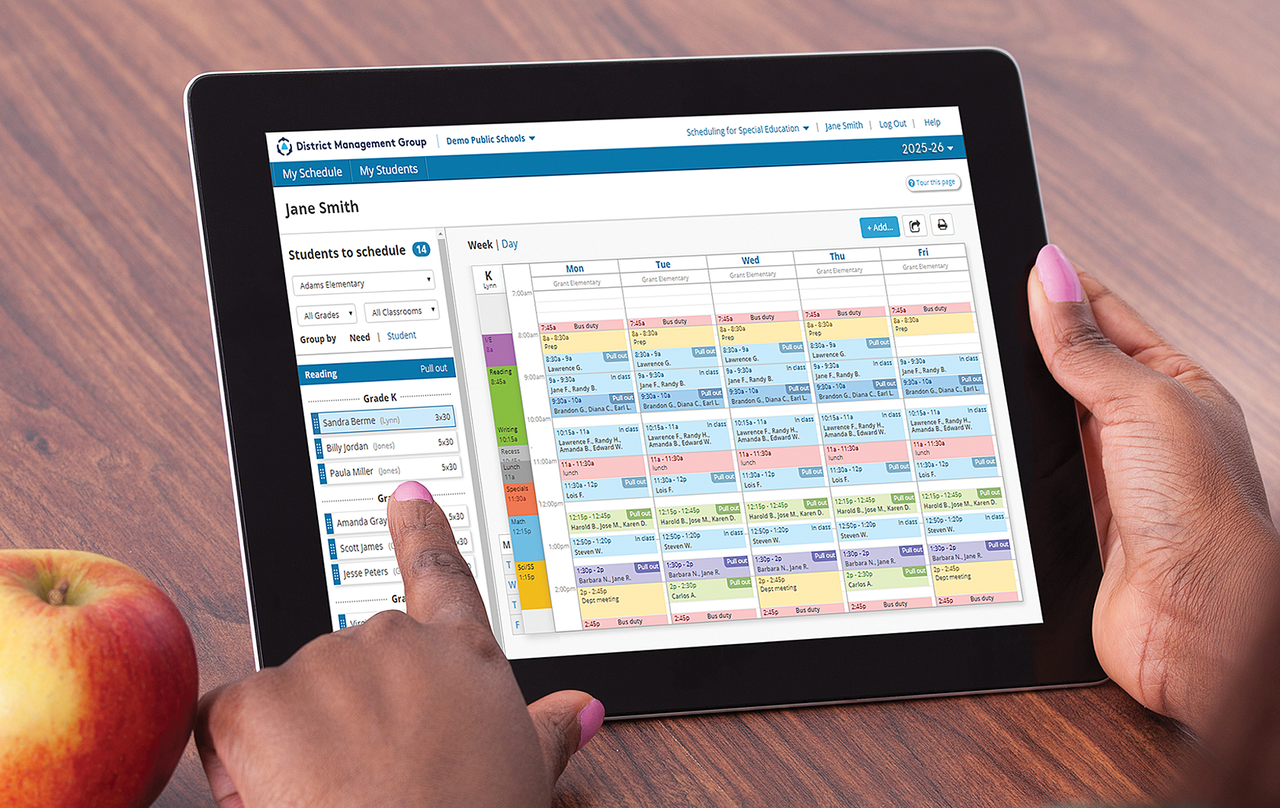
Special Education Scheduling: Ten Tips to Ensure Best Use of Student and Staff Time
A total of 7.3 million public K-12 students in the United States have special education needs – a number that has grown over the last few decades. It is believed that the needs of these students have increased in recent years due to COVID-19 disruptions that disproportionately affected their learning. To equitably support them, it is essential for schools and school systems to work intentionally and aggressively. Even pre-pandemic, ensuring that students received the mandated supports from the most appropriate, best-qualified professionals proved challenging. “We just do the best we can” or “The schedule keeps getting in the way” have long been all-too-common refrains.
So, how can schools and districts make this happen?
Make Efficient and Effective Use of TIME
While it's tempting to hope that some new pedagogical approach, new intervention, or cutting-edge research will provide a cure-all, a large part of the solution is something that sounds all too simple - perhaps even mundane: making efficient and effective use of TIME.
By this, we mean ensuring that there is:
Time in the school’s main schedule to deliver all of the mandated instruction defined in students’ IEPs
Time to receive interventions in addition to --not instead of-- regular class time
Time for a student’s needs to be matched with the skills of the most qualified provider
Time to fully and equitably leverage the skills of teachers and staff
Ability to strategically group students by a need to maximize staff time instead of delivering service one-on-one
With DMSchedules for Special Education scheduling software, school leaders can efficiently create and manage coordinated schedules for interventionists, special educators, related service providers, and support staff to ensure IEP compliance while making sure nothing falls through the cracks. Follow our ten tips to ensure the best use of student and staff time and help improve outcomes for students in intervention, special education, and related services at the elementary school level.
Tips for Making the Most of Student and Staff Time in Special Education
These tips will help you create your schedule quickly and easily, ensuring special education students get the support they need.
1. Establish clear instructional guidelines that require at least 90 minutes of literacy and 60 minutes of math each day.
Effective general education instruction is key: higher performance of general education students correlates to higher performance of students with disabilities. Ensuring all students can read is especially important: in many districts, up to half of the referrals to special education are, at their root, due to reading difficulties (Exhibit 1).
Exhibit 1: Establishing clear instructional guidelines with specified minutes for each period and grade level during the school day with DMSchedules

2. Establish common, grade-level schedules.
This has multiple benefits: it allows students to be more effectively regrouped across classrooms during intervention or small group instruction; it also allows each grade’s homeroom teachers to have common planning time opportunities every day during specials.
3. Create a daily period for intervention and enrichment of at least 30 minutes.
This period provides extra instructional time each day in addition to core content instruction time and becomes the primary time for students to receive extra help, special education services, or participate in enrichment activities.
4. Stagger the daily period for intervention and enrichment by grade.
This type of schedule allows special education teachers and related services staff to efficiently and effectively work through each grade daily and to ensure that there are no times when services cannot be provided (Exhibit 2). For example, many teachers like to teach core subjects in the morning, but if the whole school does so, it limits opportunities to pull out students in the morning and forces almost all pullouts to occur only in the afternoon.
Exhibit 2: Full school schedule with Intervention/Enrichment period created in DMSchedules

5. Clearly specify and schedule reading and math whole class time vs. small group instruction.
Specifying this in the master schedule allows specialists and interventionists to target support during small group time and avoid whole class time.
6. Establish and communicate clear student support services guidelines for when pull-out and push-in can occur and what is off-limits.
Guidelines commonly include:
Pull-out services are not allowed during reading and math instruction, but push-in services may be provided during small group instruction.
Interventions should be provided in addition to and not instead of tier 1 instruction.
These guidelines ensure that students are receiving interventions and supports in addition to -- not instead of -- essential core instruction
7. Ensure that content-strong staff provide interventions and support and that student needs are matched with teacher strengths.
In many districts, extra instruction is provided either by paraprofessionals who, by definition, do not have academic content expertise or by special education teachers who have expertise in pedagogy but often do not have specialized expertise in teaching subjects such as reading, math, and English. Make sure the support is provided by a teacher who has engaged in extensive study and training in a particular subject and has a wider repertoire of ways to teach the material.
8. Encourage grouping of students with similar needs for intervention and small group instruction.
Effective grouping can help expand the reach and impact of the most appropriate teachers and staff, and it can create opportunities for students to connect and collaborate with each other.
9. Clearly communicate that general education teachers have primary responsibility for all students’ learning -- including those students in special education.
Students are best served academically when their general education teacher takes primary responsibility for their learning. RTI and efforts like it embrace general education as the foundation for all students’ success.
10. Enable collaboration among general education teachers, special education teachers, related service providers, and interventionists by making student availability transparent.
Coordinating a student’s IEP and intervention services across teachers within a school can be time-consuming and challenging. Common practices and tools like DMSchedules for Special Education scheduling software can help reduce scheduling conflicts, find ideal times to serve students without interrupting core instruction, and improve compliance (Exhibit 3).
Exhibit 3: Student schedule that combines general education and student services created in DMSchedules

When time is optimized, it positively impacts student learning and establishes the foundation on which educators can make up for lost learning opportunities. Improve student outcomes now by making the most out of student, teacher, and staff time.
Need Special Education Scheduling Support?
DMSchedules for Special Education scheduling software allows school leaders to manage individualized student services efficiently and effectively and provides district leaders with real-time access to schedules and insights to balance workloads and identify areas needing support.
With a complete view of a student's schedule, including homeroom and all push-in and pull-out services, you can ensure student services are scheduled strategically and aligned with your learning goals. Our powerful analytics help you support and manage staff workloads, direct service time, group sizes, and more. Contact us today to get assistance with your school scheduling.

